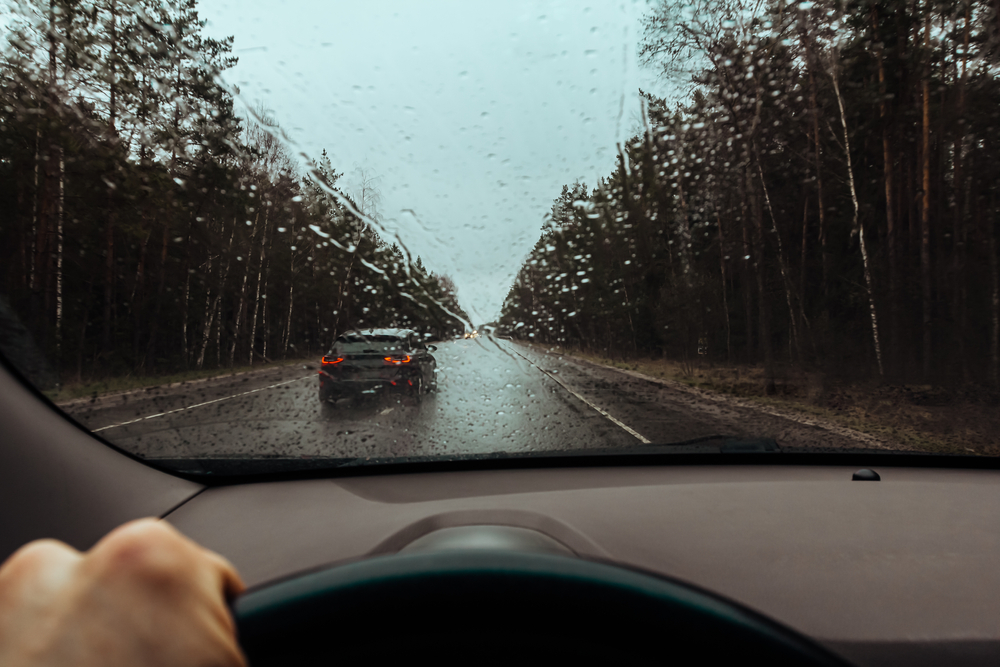Contenido
ToggleDriving in the rain can be challenging, even for experienced drivers. Are you sure you’re taking all the necessary precautions?
The effect of rain on road safety is a global problem. According to the U.S. Federal Highway Administration, there are nearly 6 million traffic accidents every year. Approximately 21% of these accidents—nearly 1,235,000—are related to the weather. Most of these accidents occur on wet pavement and during the rain: 70% on wet pavement and 46% during the rain.
What you need to know
According to official Mexican statistics, there were 969 traffic accidents related to natural factors in 2021 and, of these, 821 occurred when it was raining. This represents 5.4% of the total number of traffic accidents (slightly over 15,000).
This data, although quite unreliable due to the existing environment of underreporting, highlights the importance of moderating speed when driving in rainy conditions.
Rain can make the highway slippery and reduce visibility, increasing the risk of accidents. Here is some advice for driving safely in the rain:
1. Moderate your Speed
The speed you should drive at depends on various factors, like the condition of the asphalt and weather conditions, whether you are driving in the city or on the highway, etc.
The first thing you need to consider is that, when you are driving, you should respect the speed limits set out on the signage for each road you drive on. Driving at an inappropriate speed in rainy conditions can be very dangerous.
Rain can make the pavement slippery, so you will need more space to brake. Remember, braking distance on a wet highway can be double than on a dry highway.
2. Keep your distance
Keep a safe distance between your vehicle and the vehicle in front of you. Rain can make the pavement slippery, so you will need more time to brake. Remember, braking distance on a wet highway is longer than on a dry highway.
Under normal conditions, the recommendation is to leave a minimum distance of 2 seconds from the vehicle in front of you, and 3 to 4 seconds if you are traveling at a speed between 70 and 100 km/h.
To determine this, fix your eyes on a fixed object on the road—a tree, an advertisement or a sign, for example—and calculate the distance by counting 1001, 1002, 1003, etc. In adverse conditions you should increase the distance between you and the car in front of you by 1 to 2 additional seconds.
Another way that is more foolproof—as it increases the safe distance and is recommended when the road is wet and slippery—is to keep the same distance in meters of distance as km/h. This is, if you are going 70 km/h, keep 70 meters of distance from the car ahead.
3. Use your lights
Turn on your vehicle’s lights to increase visibility. This not only allows you to see better, but also helps other drivers see you. Avoid using your high beams, as the reflection on the rain may blind other drivers.
4. Avoid puddles
Puddles of water can hide potholes and other hazards on the highway. Also, driving through deep water can damage your vehicle. If you can’t avoid a puddle, reduce your speed and keep a firm grip on the wheel.
5. Stay calm
If your vehicle starts to slide, stay calm. Don’t brake suddenly. Instead, take your foot off the accelerator and direct the vehicle in the direction you want to go. Try to stay focused and avoid any type of distraction.
6. Check your tires
Make sure your tires are in good condition and periodically check the pressure is correct. Remember that worn tires can have reduced traction, increasing the risk of sliding. Tires in poor condition tend to be the main cause of accidents that can be attributed to the vehicle.
7. Vehicle maintenance
Good maintenance is essential for safety on the highway. Make sure your windshield wipers are in good condition and that your brakes work correctly.
Make sure to check your suspension, because shock absorbers in poor condition cause the vehicle to lose stability, have increased braking distance, reduced ABS effectiveness, among other effects. Rain can cause very adverse driving conditions, so it is imperative that your vehicle is in generally good condition.
Driving in the rain can be challenging, but if you take care of your vehicle and drive preventively, you can stay safe on the highway. Remember, safety should always be your number one priority when you are driving. 🚗💨🌧️
Remember, we are all road safety.

